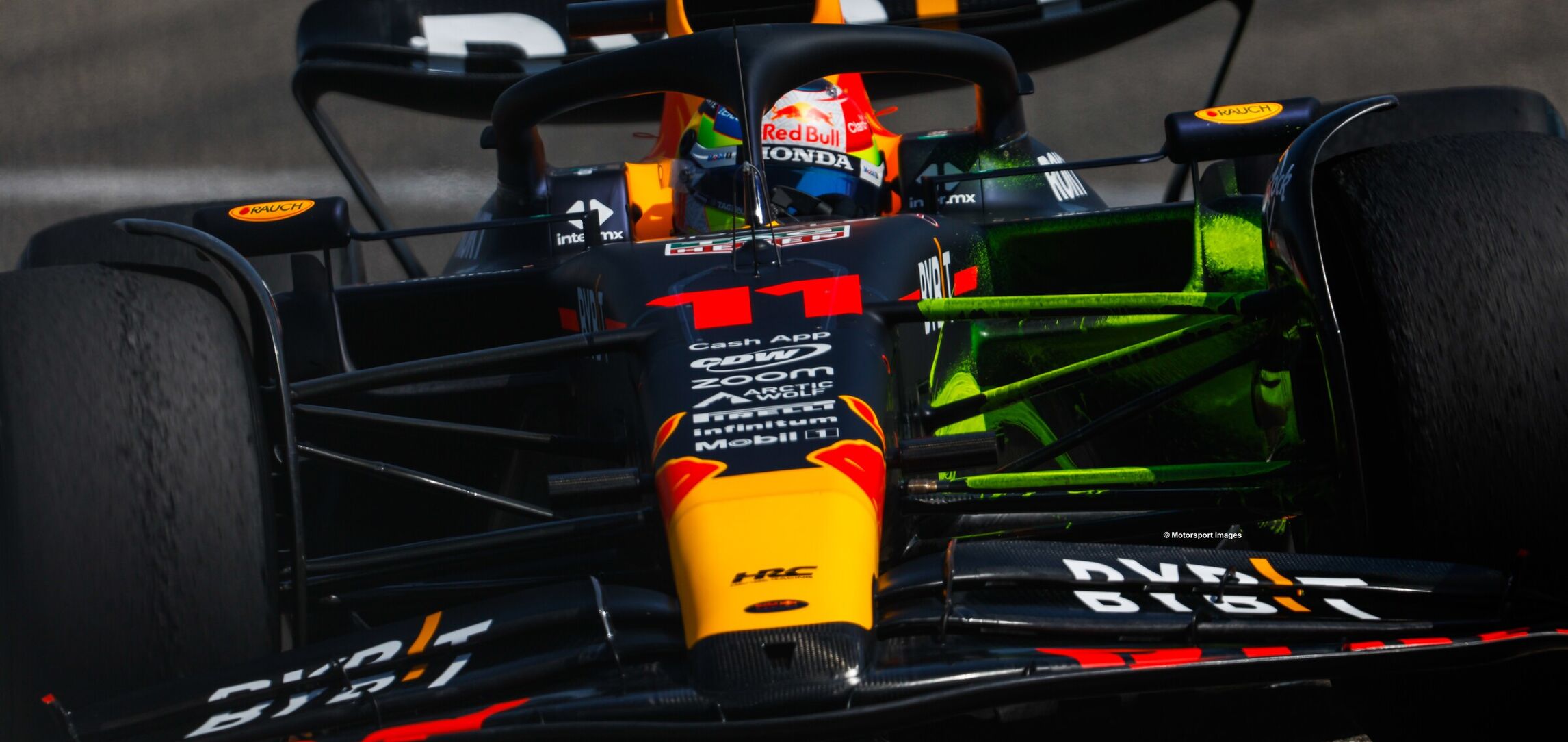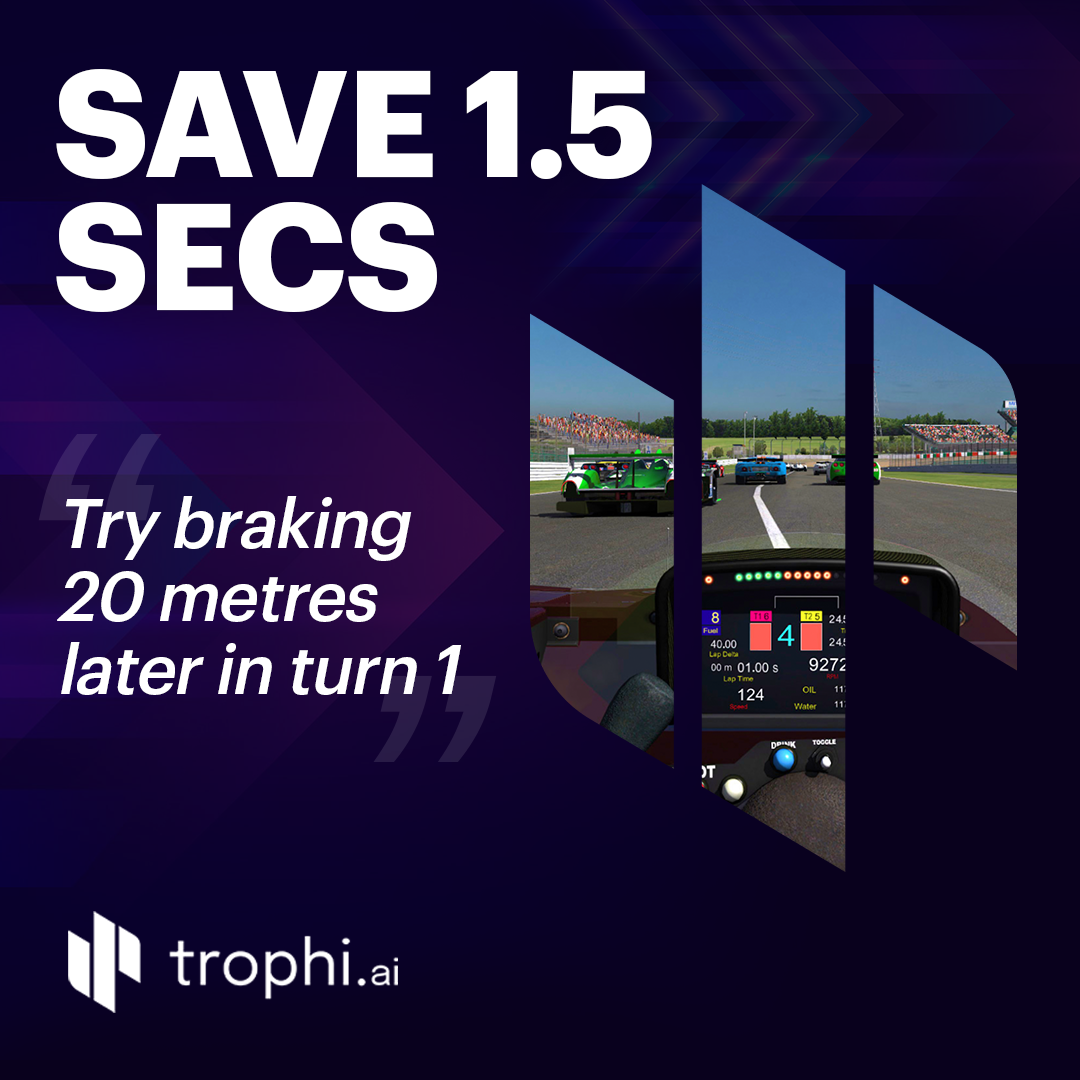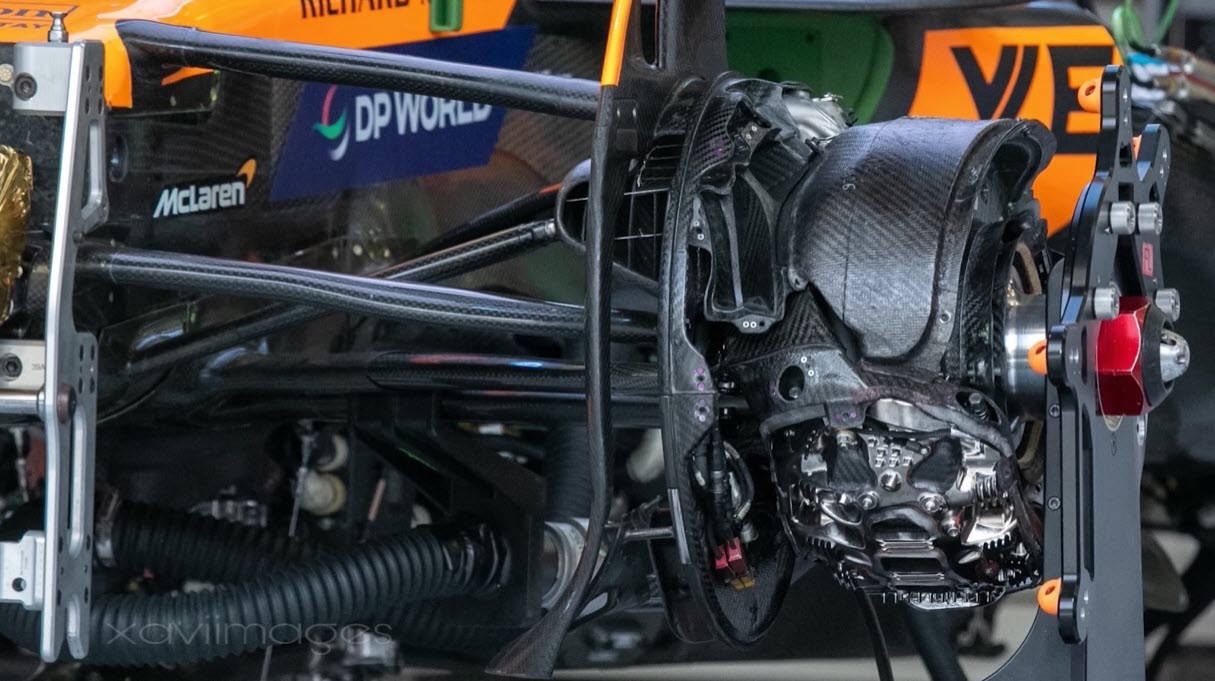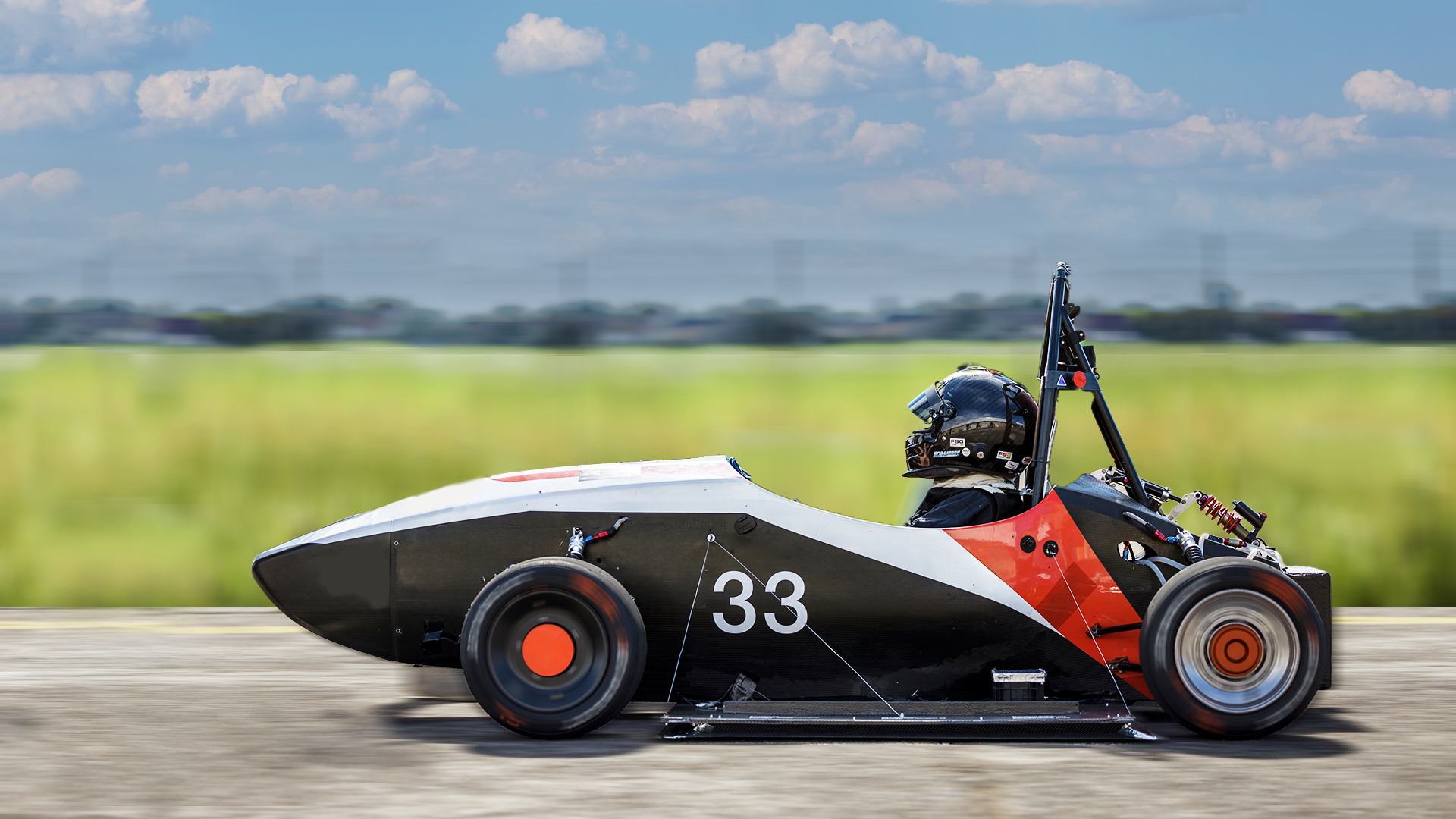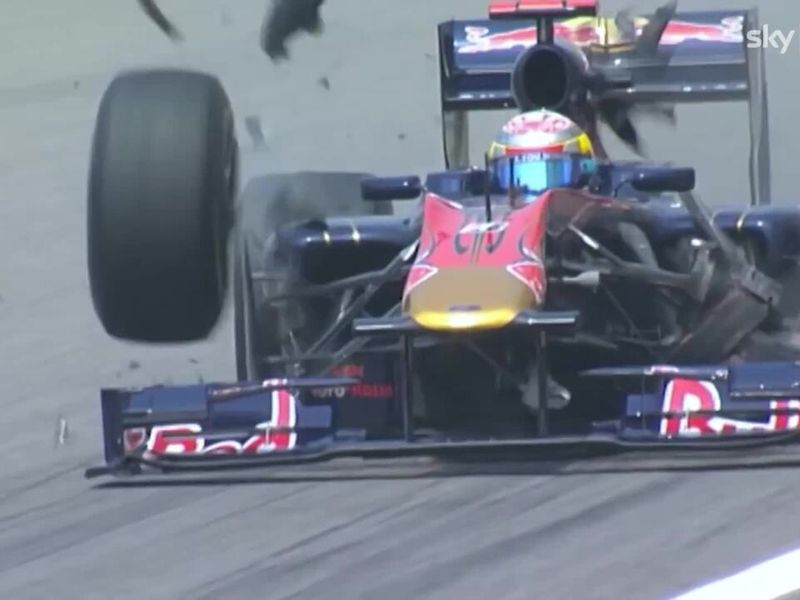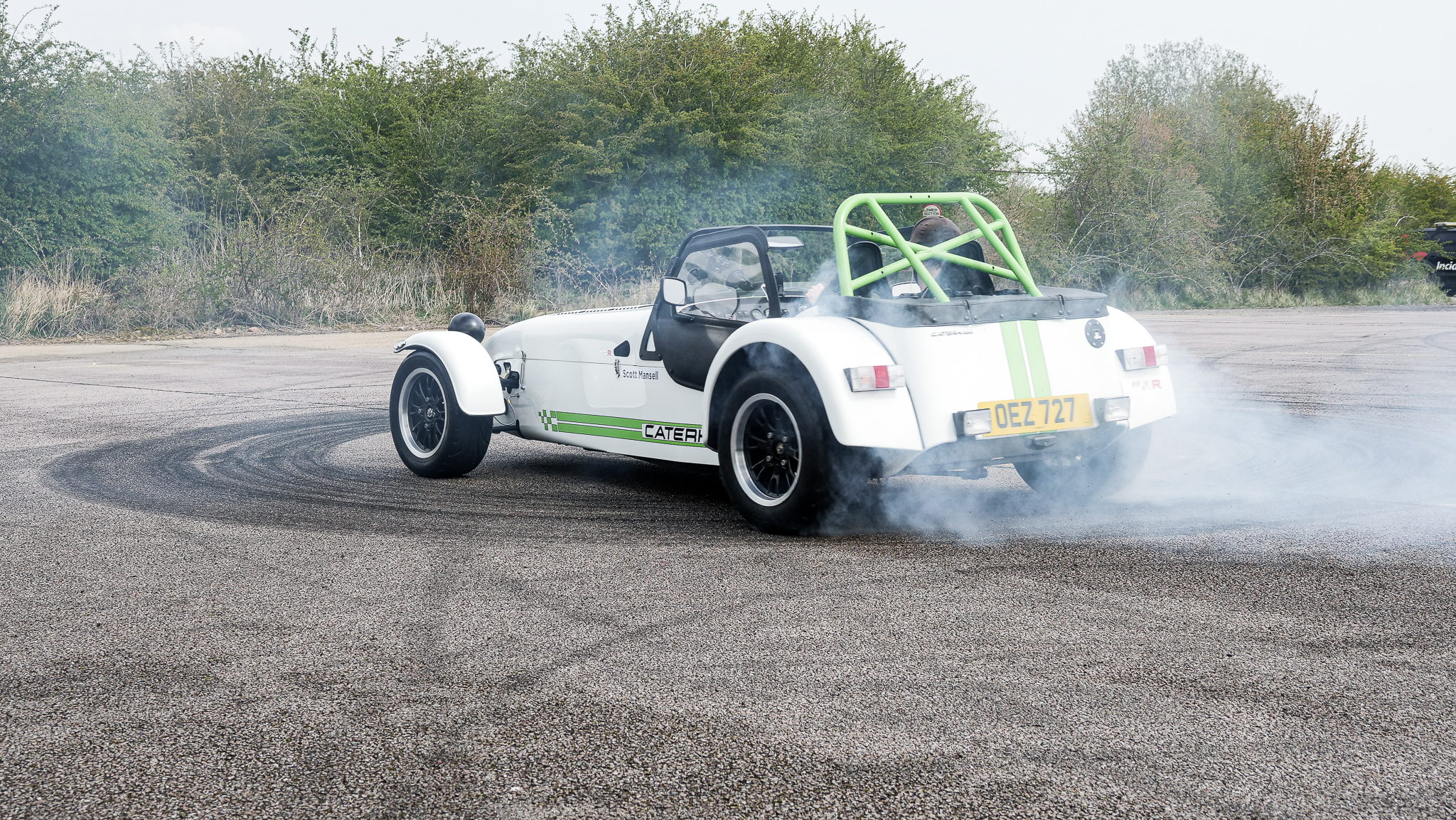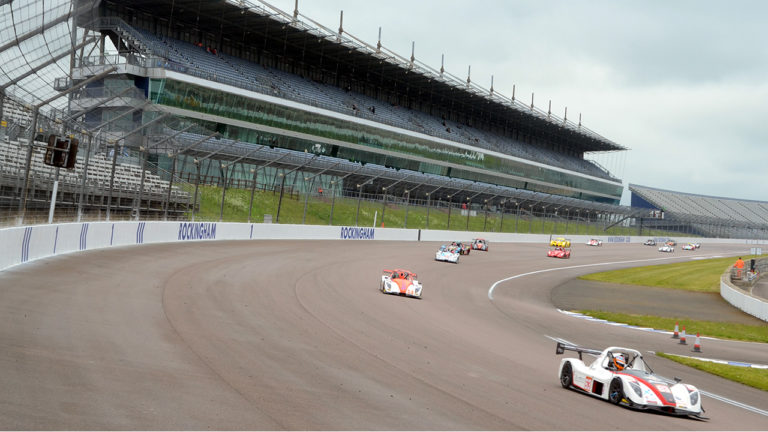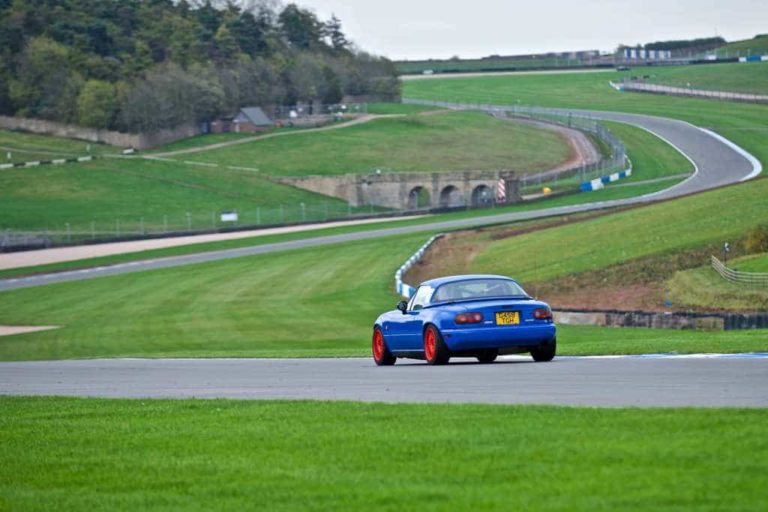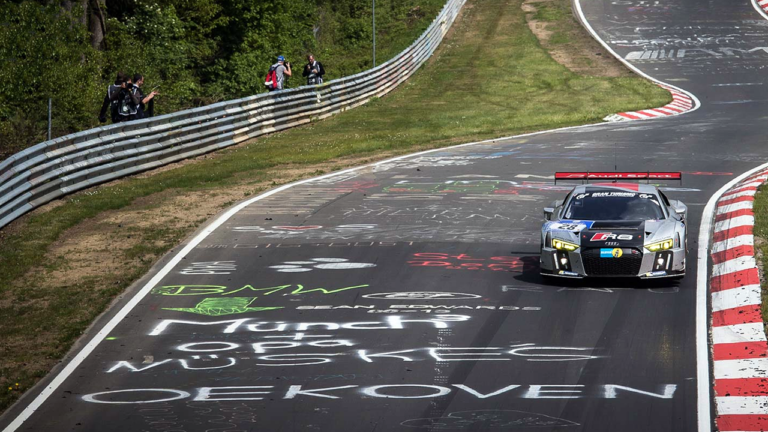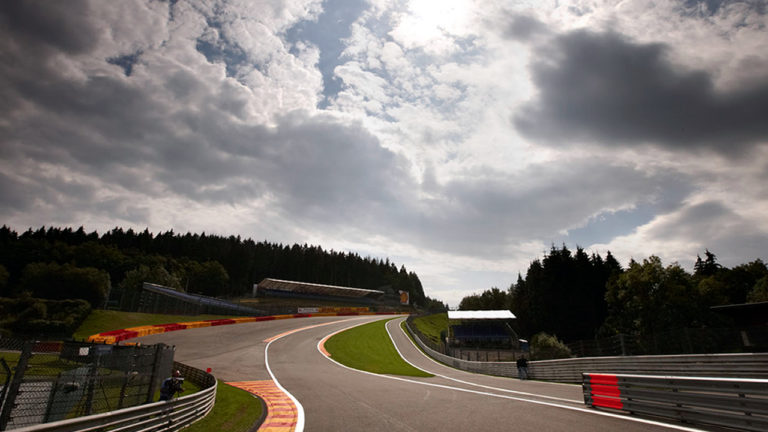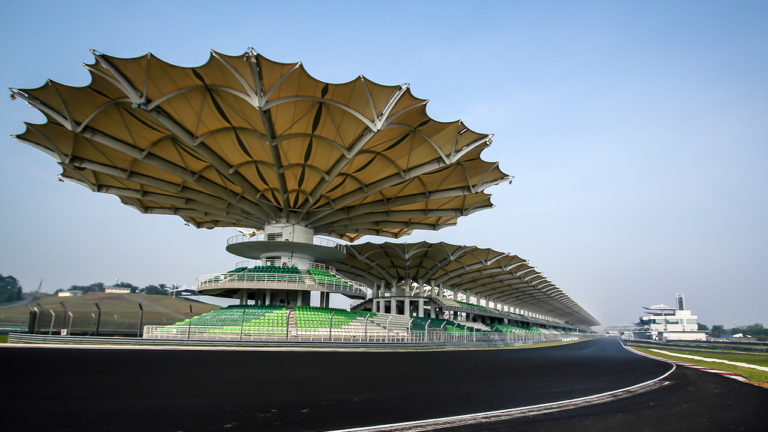The Definitive Track Guide To Brands Hatch Indy Circuit
Welcome to Driver 61’s video circuit guide to Brands Hatch Indy. In this track guide Scott Mansell – our resident driver coach and outright lap record holder at Brands Hatch Indy – takes us through an in-depth look at racing lines, braking references and everything you need to know to be fast at this MSV track.
BRANDS HATCH DRIVER COACHING & INSTRUCTION
Our circuit guides are a useful resource before you head to your track or test day, but your progression on track will always be faster with the help of a driver coach.
TRACK MAP
If you’d like to follow our circuit guide with a track map, use the following diagram of Brands Hatch.

CIRCUIT ADDRESS
Trying to get to Brands Hatch? Here’s the address:
Brands Hatch Circuit, Fawkham, Longfield, Kent, DA3 8NG.
Start / Finish GPS
Start / Finish Line: 51 21’37.1″N 0 15’37.2″E
VIDEO TRANSCRIPTION
So here we are at the start/finish line, the Brabham Straight at Brands Hatch circuit. We’re going to start a little before the start/finish line just to give you an overview of the racing line as you’re coming down the straight.
The previous corner is Clearways. It’s a relatively slow, accelerating, right-hander, but we then keep the car over to the right-hand side near to the pit wall here at Brands Hatch.
We’re going to head up the start/finish straight now and just up ahead we can see the start/finish line and the lights. You’ll receive all flags there and the lights at the beginning of the race – if you’re competing here at Brands Hatch.
PADDOCK HILL BEND
At this point, a few hundred meters before the start/finish line, we’re going to start bringing the car back over to the left-hand side. We have Paddock Hill bend coming up, which is a fast right-hander.
In most cars with six gears, it’s a fourth or fifth gear corner. You are coming uphill as you enter and then you’ll apex just as you’re coming back down the hill. There’s a big dip at the bottom of Paddock Hill, which you will see in a few moments.
As we’re coming up to Paddock, you’ll see that we’re going uphill and the braking for Paddock Hill bend can be quite tricky because depending on what car you’re in, you’re either braking just before the crest of the hill, on it or slightly afterwards.
It’s difficult the get the braking right, especially if your car needs to be braking just on the crest of the hill because obviously at this point the weight of the car, the mass of the car will be coming up as you go over the rise.
First of all, we’re going to take a look at some reference points. Now, at this time, it’s probably still a little bit early to be getting on the brakes in most cars, but you do have the orange boarding as a reference.
As you can see, we’re not all the way over to the left-hand side of the circuit. We actually have a bit gap to the left-hand side of the track.
The reason for this is as you’re coming into Paddock Hill, the circuit actually turns ever so slightly before it properly turns into the corner and if you’re running up against the white line on the left-hand side, you’ll need to turn while you’re braking into Paddock.
You want to brake with the car in a straight line. At this point, we’re keeping the car 2, 3, 4 meters away from the left-hand white line so that we can brake in a straight line and we’ll end up on the outside of the track once we’re finished with all of our braking.
On the left-hand side, we’ve got the three-striped braking marker and, on the right-hand side we have the end of the black wall, which is the end of the pit line.
Depending on the car, depends where you’re braking, but the important thing is to understand these references and to know where they are. Then each lap you can gradually push yourself a little bit deeper into Paddock Hill bend.
Coming into Paddock Hill bend, you’ll notice that I’m just letting the car move over to the left slightly. You can see there’s a slight change of tarmac and just in front of the right-hand side of the car, you can see the end of the pit lane line.
This is a good reference to know exactly where the car is positioned as you’re coming into Paddock because as you can see from this point, we can’t see the apex of the corner.
You can’t see the curb on the inside, so it’s very important to have the sixth sense of the car’s position – you get that from all these little reference points.
Keep the car in straight line as we’re coming in on the brakes, but at this point, we’re coming off the brake pedal and maybe trailing in the brakes just a little bit, but coming off smoothly.
Again, from this point you can’t see the apex of the corner, so we’re turning in blind. We have our vision down towards the inside of the corner. We can begin to see a little bit of the kerb on the right-hand side, and it’s important that your vision is a long way ahead of yourself here because we’re going quite quickly.
Even in this Radical SR1 that doesn’t have much downforce and doesn’t have sleek tyres we’re still doing 154 km/h.
Coming into the turn, into Paddock Hill, you can now see that there’s a small kerb on the right-hand side. As we’re coming into the apex, the kerb gets bigger, so big in fact that you don’t want to be touching it as you’re coming into the apex.
You can see that made a mistake on this lap. This Radical SR1 was early in it’s development, and a little bit tricky to drive. Well, that’s my excuse.
Anyway, so I missed the apex slightly here, and I’ve got a lot of oversteer at the apex. It’s not the smoothest lap, but you can see here that we’re in towards the kerbing and on the right you can see that it has two stages.
It’s fairly steep and then there’s a plateau on the top. You don’t want to touch it too much, it’s so steep that it will unsettle the car and maybe throw you off line.
At this point, we want to be looking all the way down the hill and in the dip just down here because that’s about where we’ll be making the exit.
We’ll allow the car to push out to the kerb on the outside of the circuit. So that’s why we need to be looking so far ahead.
At this point we’re blending in the accelerator and letting the car push out. Now, obviously we’re going downhill here. For any of you who’ve not walked down this hill, it’s a lot steeper than it looks.
You can let the car push out quite wide, then as you come into the dip – the compression – the car will give you a little more grip as you have more weight over the tyres.
I’ve come out reasonably well here and onto the exit kerb. It is quite steep in this area, so if you’re in a single-seater, you probably don’t want to take too much of this kerb, because it might touch the plank.
For most cars, you can take all of the kerb on the left-hand side. With the UK track limit rules, remember that we can run our outside tyres up to the edges of the kerb.
We want to be using all the road on the outside, but we can’t use any of the green concrete. However, know that it is just concrete, so if you do make a mistake and run a couple of feet wide, it’s not the end of the world.
At Brands Hatch, if you’re racing or even on test days, they’re very strict with circuit limits.
By this point, we should be flat out on the accelerator. You can see I’ve used most of the kerb and then we bring the car back onto the track.
DRUIDS BEND
The next corner is an 180-degree, tight right-hander called Druids. We’re coming up hill, so the braking can be quite tricky, and it’s important you find a good braking point, because you can save quite a lot of time.
Coming up to the braking zone, you can see on the left-hand side, we have a Marshal’s point, at the end of the fence as shown by the orange board.
We’ll likely be braking somewhere between this point and under the bridge.
We want to get car over to the left-hand side and on the brakes in a straight line. We’re still going uphill here, so it can be quite easy to lock the front tyres because a lot of the car’s weight is towards the rear.
Druids Bend is quite similar to Luffield at Silverstone, but somewhat tighter. We’re in the corner for quite a long time so it’s important we enter well. At this point, you can see that my head is turning over to the right and we’re looking towards the apex.
There are a few options that we have here for the racing line at Druids Bend, Brands Hatch. Traditionally, divers come in around the outside on entry and then bring the car into a late apex.
However, the quicker way here at Druids – depending on the car – is ‘V’ the corner off.
Rather than coming around the outside, then making a late apex and focusing on the exit, what tends to be quicker here is for us to enter earlier and cut off this section of track.
Then we ‘V’ the corner off, have this area as the slowest point of the corner, try to get the car to rotate and then accelerate out Druids – straight lining the exit.
At corner entry you can see that my vision and my head is looking all the way to the inside in this area somewhere around here – always looking a long way ahead of ourselves.
I’ve not made the apex on the inside here, but I’m not all the way on the outside of the track either. You can see the car got some oversteer and at this point, we’ll be having the minimum speed in the corner.
Making the car rotate can be difficult – please see our tutorials on Driver 61 about weight transfer and rotation to understand more.
Now, I’m looking towards the outside of the circuit. I’m trying to figure out whether the car is rotating properly and if I can get back on the throttle.
Then we allow the car to turn more; you can see here that the car begins to turn in to the apex. I’ve lifted off the throttle and transferred some of the weight to the front of the car. Therefore, it’s turned into the apex, and now we’re in a good position to get the car out of the corner.
You can see that I’ve got a nice opportunity for a straight exit coming out Druids, which means I’ll be able to get on the accelerator and out of druids as quickly as possible.
Again, we’ve got just some oversteer on the exit. You can use some of the kerb on the left-hand side. At Brands Hatch, they have multiple cameras around the circuit to show and if you’ve run wide out of the corner.
Here, on the left–hand side, you can see there’s a white sensor just beyond the kerbing. If you run wide, there’s an automatic camera that will take a picture of you, and then the officials can give you the appropriate penalty. They even run this in test days of Brands Hatch, so you need to be careful with your circuit limits.
GRAHAM HILL BEND
Now we’re coming back down the hill and towards Graham Hill bend. The first part of the corner as we come down the hill is flat-out in every car that I’ve ever driven at Brands Hatch.
However, it makes the braking for Graham Hill a little bit tricky because the car can be turning and as you get on the brakes. What it means is that you need to be very smooth when you first get on the brakes.
We cross the white line, somewhere in the middle of the road as we come into Graham Hill. Now I’m beginning to get on the brakes and we begin to turn into Graham Hill.
On the outside of the circuit you can see there’s an entry kerb – be a little bit careful that you don’t fall onto the grass. It’s very easy to do because our vision is across at the apex of the corner and we’re only using our peripheral vision on the outside.
When you do drive onto the entry curb here, you can actually feel it through the steering wheel. Let that be a warning sign that you’re right at the limit of the track!
You can see we’re using most of the length of the entry kerb and on the right-hand side. Now we’re bringing the car in towards the apex at Graham Hill. Now this curve is quite aggressive on the inside, so if you’re in a sports prototype car or a single-seater, you’ll probably only be able to use half of the kerb at most.
If you use all of it, then you’re going to unsettle the car. In some saloon and GT cars, you might be able to get away with using a little bit more of the kerb.
It’s important, as we’re coming through Graham Hill, that you get on the accelerator as soon as possible. Brands Hatch doesn’t have many long straights, but this is the second longest so it’s really important that we get on the accelerator as soon as possible.
Concentrate on the exit. You can see how I got some oversteer in the Radical SR1 and we’re going to use all of the curb on the outside. Again, as I mentioned at Druids, there’s a sensor in the grass, so make sure you don’t run wide.
SURTEES AND MCLAREN
We should already be flat out long before the exit point, and now it’s an easy run down to the next corner of Surtees which is a fast left into a fast right of McLaren – an exciting part of the circuit. It’s almost flat or flat a lot of cars that you might drive at Brands Hatch.
We’ve got a few markers on our right hand side. We’ve got the two marker here, the braking board, we’ve got the end of the barrier marker, and we’ve got another braking marker all the way down as we’re coming into Surtees.
Now as I said, in most cars it’s a gentle brake, a lift or even flat out if you’ve a little bit of downforce. My vision is already looking across towards the inside of the corner. It’s critical here because we’re going quickly, like at Paddock Hill.
We’re using all the road on the right-hand side, and in most cars, this is generally where you’re just gently touching the brakes.
Obviously, because we’re going into a fast corner, we don’t want to be stamping on the brake pedal. Rather, a nice smooth braking movement with not so much pressure. Then we don’t transfer too much weight to the front of the car. That’s often the problem here, at Surtees, people over slow the car.
People brake too much as they’re coming into the corner and they’ll transfer too much weight to the front of the car. This means that the rear of the car is light, which means that they have over steer as they’re coming through Surtees.
This isn’t what you want when you’re going very quickly. My vision is across at the inside of the circuit – all smooth movements on the steering wheel – and very gentle on the accelerator whether you’re coming off the throttle or back on and again.
You’ll need to be careful with the kerb as Surtees. It depends on your car – even the first half of this kerb can unsettle some.
If you look down at the kerbing, the apex is in this little kink. If you walk around the circuit you’ll see there’s actually a drain there and that’s exactly where the apex is.
You can see the kink, this extra kink here in the kerbing, that’s where we’re going to be making the apex.
You can see here that this second half of the kerb that runs down here is aggressive. No one uses this kerb; it’s too big for most cars. Maybe in some older saloon cars, you could get away with it, but it’s something that you’re going have to test. Definitely, in single-seaters, prototype cars and modern GT cars – you’re not going to be using that aggressive part of the curbing on the left.
Now we’re heading forwards into McLaren. Let in the car push wide. The right-hander isn’t so much of a corner; rather we’re using this next section as a braking zone for coming into Clearways.
CLEARWAYS
Clearways is quite technical, it’s quite difficult, but it’s important here because it’s tricky. You can see the circuit comes around to the right. Well, it actually comes around to the right, continues around tighten up a little bit and then we’re back on to start/finish straight around here.
Now what we’re doing here is we’re allowing the car to push towards the outside; we will have the minimum speed here before we then come to Clearways and get back on the accelerator.
It’s difficult because when you’re braking, we might have a little bit of steering angle. You can see I’m trying to keep the car as straight as possible with little steering angle, in it so we can decelerate, get on the brakes as much as possible.
We let in the car push towards the outside, but not all the way around the outside. You can see there’s a bit of a gap and I’m actually quite wide on this lap.
If you do go too far over to the left, it’s tough to get the car to come back and into Clearways. You just can’t make the car turn enough. So we’re not using all of the road on the left-hand side.
You can see now that my head is turned and we’re looking towards the inside of Clearways.
We can just catch the first glimpse of the kerb at clear ways. We’re still decelerating slightly. We have just come off the brakes, and we’ll let the car roll into Clearways – we’re somewhere in the middle of the road at this point.
You can see on the right-hand side, there’s a smaller kerb. Well, the kerb gets bigger as you go further into this next corner. Where the kerb becomes larger and wider, this is where we want to be making the apex at Clearways.
So as you can see, the bigger kerb is appearing, and that’s where we want to make apex. You can just touch the kerb here if you want to. If you do look quite closely, it’s not an absolutely flat kerb, but this part here is flat.
However, the next part on the inside is quite rough. You don’t want to take too much of that second stage of the inside kerb.
As you can see, we’re coming up over a crest. As you come through – because you’re getting back on the accelerator and the rear of the cast squatting down and it’s sitting down at the rear – we can get some understeer.
We typically get quite a lot of understeer in this phase of Clearways at Brands Hatch. So it’s something drivers will always complain about, because we can’t get the setup right for Clearways and it’s such an important corner here at Brands Hatch because it leads onto the long straight.
It’s crucial that we get a good exit coming out of Clearways, but it’s something that we always struggle with- To get a car well setup here, we have to compromise the other corners.
Most of the time you just have to deal with it and change your driving technique slightly to get the car to rotate at this point.
We’re just looking a long way ahead of ourselves here and the exit of Clearways is actually quite tricky because as you can see the circuit continues to turn all the way around here as we’re coming and onto the start/finish straight.
From this point, and even before, we can flat out in a lot of cars. So it’s imperative that we do get on the accelerator pedal as soon as we possibly can.
If you get too much understeer and you’re running out of track on the outside you’ll have to lift at this point – destroying your lap time.
It’s best to give yourself a few inches, half a foot, on the outside so that you make sure that you can keep the accelerator flat all the way through this section. Then we get a good drive onto the start/finish straight.
CLARK CURVE
Now we’re coming through Clark Curve. You can see a marshal’s post all the way down the road. This is what we’re looking for as we come onto the start/finish straight – it’s where we’ll make the inside of the corner.
At Brands Hatch Indy there is lots going on. You’re not out of a corner for very long. This is the point that you want to check your mirrors and if there’s anyone quick behind you, or if you’re on track day, pull over to the right-hand side (or whichever side your track day company tells you) to allow people passed.
Now is the time to check your temperatures, check your gauges and make sure everything’s right with the car because you don’t have much opportunity elsewhere here.
Anyway, we’re looking towards at marshal’s post. We’re gently bringing the car to the inside to have the shortest racing line as we’re coming onto the start/finish straight.
As you saw at the beginning of this video, we keep the car over to the right-hand side along the pit wall. Obviously, this is where you see the pit board when you’re racing.
So that’s all for this Brands Hatch Indy circuit guide. Thank you very much for watching. If you enjoyed it, please share with your social media and if you’d like to see any of the other circuit guides, please check out the rest of our site.


